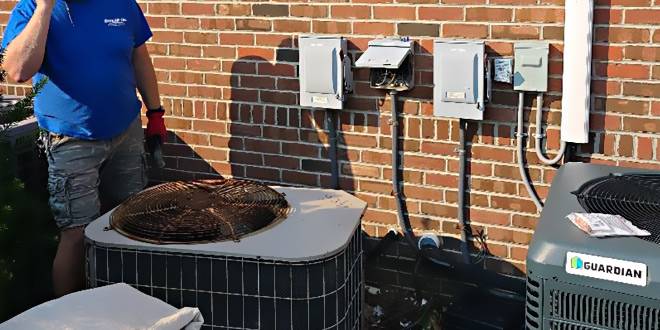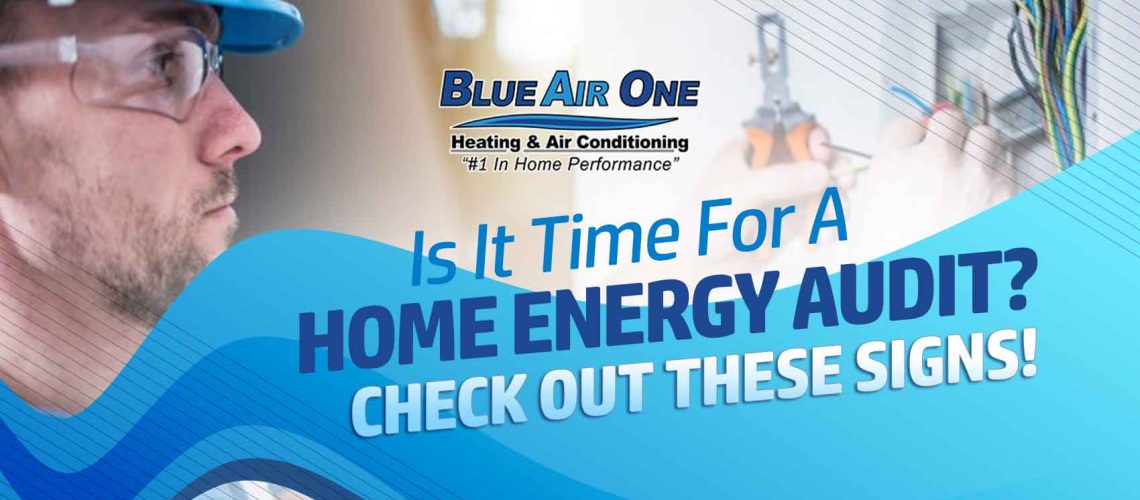When it comes to maintaining an efficient and comfortable home, understanding the role of energy consumption is crucial. Home energy audits serve as a critical tool in this understanding, providing homeowners with a detailed analysis of their home’s energy use. In this article, “Top 7 Signs It Is Time for a Home Energy Audit,” we will delve into the unmistakable indicators that suggest your home could benefit from such an evaluation.
Sign 1: Unexplained Increase in Energy Bills
One of the most obvious and concerning signs that it’s time for a home energy audit is an unexplained increase in your energy bills. This sudden spike is often the first indication that something isn’t working as efficiently as it should be in your home.
Identifying the Issue
An increase in energy bills can be baffling, especially if your usage patterns haven’t changed significantly. It’s important to compare your current bills with those from the same period in previous years. Minor fluctuations are normal, but a significant rise suggests a deeper issue.
Potential Causes
Several factors can contribute to increased energy consumption. These include inefficiencies in your heating and cooling systems, poor insulation, or energy leakage around windows and doors. Additionally, aging appliances, especially those that are not Energy Star certified, consume more power as they lose efficiency over time. Energy Star appliances are designed to use less energy compared to standard models, and upgrading to these can significantly lower your energy bills.
Investigating Further
Before a home energy assessment, it’s helpful to do a preliminary check of your home. Look for obvious issues like gaps around doors and windows, or check if your heating or cooling system is working harder than usual.
Role of a Professional Energy Audit
A professional energy auditor will use specialized tools like blower doors and infrared cameras to detect areas where energy is being wasted. They can pinpoint exact problem areas, such as poorly insulated walls or ductwork leaks, which might not be apparent during a basic home inspection.
Next Steps
After identifying the causes of increased energy bills, the next step is to address these issues. This might involve upgrading insulation, sealing leaks, or repairing or replacing inefficient HVAC systems. Implementing these changes can lead to substantial savings on future energy bills.
Sign 2: Inconsistent Indoor Temperatures
Experiencing inconsistent temperatures in different parts of your home can be more than just a comfort issue; it’s often a sign that your home’s energy efficiency needs assessment. Inconsistent temperatures can indicate problems in your heating, ventilation, and air conditioning (HVAC) systems or issues with insulation.
Understanding the Problem
When some rooms are noticeably warmer or cooler than others, it suggests that your HVAC system is not distributing air evenly. This could be due to several reasons, such as blocked air ducts, poor insulation, or an aging HVAC system struggling to maintain consistent temperatures.
Checking for Obvious Causes
Start by inspecting your HVAC vents for blockages and ensuring they are open and unobstructed. Check for drafts around windows and doors, as these can also lead to uneven heating or cooling.
The Role of Insulation
Proper insulation plays a critical role in maintaining consistent temperatures. Poor or degraded insulation can lead to heat loss in the winter and heat gain in the summer, causing your HVAC system to work harder to maintain comfort.
Energy Audit’s Role
A professional energy audit can reveal the root causes of temperature inconsistencies. Through thermal imaging and other diagnostic tools, an auditor can identify areas where insulation is inadequate or where there are leaks in the building envelope.
Implementing Solutions
Based on the audit’s findings, solutions may include adding or upgrading insulation, sealing leaks, or servicing the HVAC system to improve its efficiency. Addressing these issues will not only lead to more consistent indoor temperatures but also contribute to lower energy bills and increased comfort.
Sign 3: Aging HVAC Systems

An aging HVAC system is often a clear indicator that your home may need an energy audit. As HVAC systems age, they typically become less efficient, consume more energy, and struggle to maintain optimal comfort levels in your home.
Recognizing an Aging System
HVAC systems typically have a lifespan of 15-20 years. If your system is approaching or has surpassed this age, it’s likely not operating at peak efficiency. Signs of an aging system include frequent breakdowns, unusual noises, and reduced heating or cooling capacity.
Efficiency Loss Over Time
Over time, wear and tear on your HVAC system can lead to decreased efficiency. This means it requires more energy to heat or cool your home, leading to higher energy bills. An older system may also struggle to maintain consistent temperatures, further indicating inefficiency.
The Importance of Regular Maintenance
Regular maintenance can extend the life of your HVAC system and improve its efficiency. However, even well-maintained systems will eventually show signs of age. If you’re facing frequent repairs, it might be more cost-effective in the long run to consider a replacement.
How an Energy Audit Helps
A home energy audit can assess the efficiency of your HVAC system. Using tools like blower doors and infrared cameras, an auditor can determine if your system is working properly or if it’s contributing to energy loss in your home.
Considering Energy Saving Upgrades
If your HVAC system is identified as a major contributor to energy loss, upgrading to a newer, more energy-efficient model can be a wise investment. Modern HVAC systems are designed to use less energy while providing better comfort, leading to long-term savings and a more sustainable home environment.
Sign 4: Drafts and Poor Insulation
Drafts and poor insulation in your home are telltale signs that it’s time for a home energy audit. These issues not only compromise your comfort but also lead to significant energy loss, making your HVAC system work harder and increasing your energy bills.
Identifying Drafts
Drafts are often felt near doors, windows, and attic spaces. You might notice that certain areas feel breezier or colder than others. These drafts occur when there are gaps or inadequate sealing in the building envelope, allowing outside air to enter and conditioned air to escape.
The Impact of Poor Insulation
Insulation is crucial in maintaining a consistent indoor temperature by reducing heat transfer. In homes with poor or outdated insulation, heat escapes during the winter and enters during the summer, leading to inefficient heating and cooling.
Simple Checks You Can Do
Look for visible signs of inadequate insulation, like fluctuating temperatures in rooms or high heating and cooling bills. Checking around windows and doors for gaps or feeling for drafts are good starting points.
Energy Audit Insights
A home energy audit can pinpoint the exact locations and extent of drafts and insulation issues. Using tools like infrared cameras, auditors can visualize areas where heat is being lost and provide specific recommendations for improvement.
Addressing the Issues
Solutions may include adding or replacing insulation, sealing gaps around windows and doors, or even upgrading to more energy-efficient windows. Addressing these issues can significantly improve your home’s efficiency and reduce energy costs.
Sign 5: Frequent HVAC Repairs

Frequent repairs and maintenance issues with your HVAC system are clear indicators that your home may benefit from an energy audit. A constant need for repairs not only indicates potential inefficiencies but also can be a significant drain on your finances.
Recognizing the Pattern
If you find yourself calling the HVAC technician more often than usual, it’s a sign that your system is struggling. Frequent issues could include problems with the thermostat, strange noises, or the system not heating or cooling effectively.
Underlying Causes
Frequent repairs often point to an aging system, but they can also indicate deeper issues such as improper installation, inadequate maintenance, or even the wrong size system for your home. These factors can all contribute to decreased efficiency and increased energy usage.
Preliminary Assessments
Take note of the nature and frequency of the repairs. Are they minor issues or major system malfunctions? Understanding the severity and recurrence can help in assessing whether a comprehensive audit is needed.
The Role of an Energy Audit
An energy audit can help diagnose why your HVAC system requires frequent repairs. It can reveal if the issues are due to the system itself or other factors like poor insulation or duct leaks. This comprehensive assessment helps you identify energy-saving opportunities.
Long-Term Solutions: Energy Efficiency Upgrades
Based on the audit’s findings, solutions may range from routine maintenance to upgrading to a more efficient system. In some cases, addressing other energy inefficiencies in the home can reduce the strain on the HVAC system, thereby reducing the need for frequent repairs.
Sign 6: Excessive Dust and Indoor Air Quality Issues
Excessive dust accumulation and concerns about indoor air quality are often overlooked signs that it’s time for a home energy audit. These issues can indicate problems with your HVAC system and overall home efficiency.
The Dust Problem
If you notice that dust builds up quickly in your home, it could be a sign of leaks in your ductwork or insufficient filtration in your HVAC system. These leaks can pull dust and other pollutants into your home, affecting the indoor air quality.
Indoor Air Quality Concerns
Besides dust, other indoor air quality issues like mustiness, humidity problems, or the presence of allergens can also indicate energy inefficiencies. Poor ventilation and humidity control can contribute to these problems, often exacerbated by an underperforming HVAC system.
Simple Observations
Pay attention to how quickly dust accumulates after cleaning and whether any rooms feel stuffier or have a different smell. These observations can be crucial in identifying underlying issues.
How an Energy Audit Can Help
During a home energy audit, professionals can assess your HVAC system and ductwork for leaks and inefficiencies. They can also evaluate the ventilation and humidity control in your home, providing a comprehensive picture of the factors affecting indoor air quality.
Addressing the Root Cause
Based on the audit, solutions may include repairing or replacing ductwork, improving filtration systems, or adjusting humidity controls. By addressing these issues, you can improve energy efficiency and enhance the health and comfort of your indoor environment.
Sign 7: Your Home Hasn’t Had an Energy Audit in Years
The lack of a recent home energy audit itself can be a significant sign that it’s time to schedule one. Regular energy audits are essential in maintaining optimal energy efficiency, especially as homes age and technologies evolve.
The Importance of Regular Home Energy Assessments
A home energy audit is not a one-time event but should be part of regular home maintenance. Over time, changes in your home, such as settling, wear and tear, and updates to systems, can affect its energy efficiency.
Changes in Living Situations
Your energy needs can change with alterations in living situations, such as family size changes or new work-from-home setups. An outdated audit may not reflect your current energy usage patterns.
Advancements in Technology
Energy efficiency technologies are continually evolving. An audit conducted several years ago may not have considered newer technologies that could now be beneficial for your home.
What to Expect in a Modern Energy Audit
Today’s energy audits are more comprehensive and use advanced tools like thermal imaging to detect inefficiencies that might have been missed in the past. They can provide a more detailed and accurate picture of your home’s energy performance.
The Benefits of an Updated Audit
A recent audit can help identify new ways to save energy and money, improve comfort, and reduce your carbon footprint. It can also increase the value of your home by ensuring it meets current energy efficiency standards.
Take Action with Blue Air One Heating & Air Conditioning! 🌟🏡
Ready to enhance your home’s energy efficiency? Contact Blue Air One Heating & Air Conditioning today for a professional Home Energy Audit! Embrace the journey towards a more sustainable, comfortable living space. Act now and transform your home into a beacon of efficiency and comfort. Call us and start saving on your energy bills! 📞💚🏠




